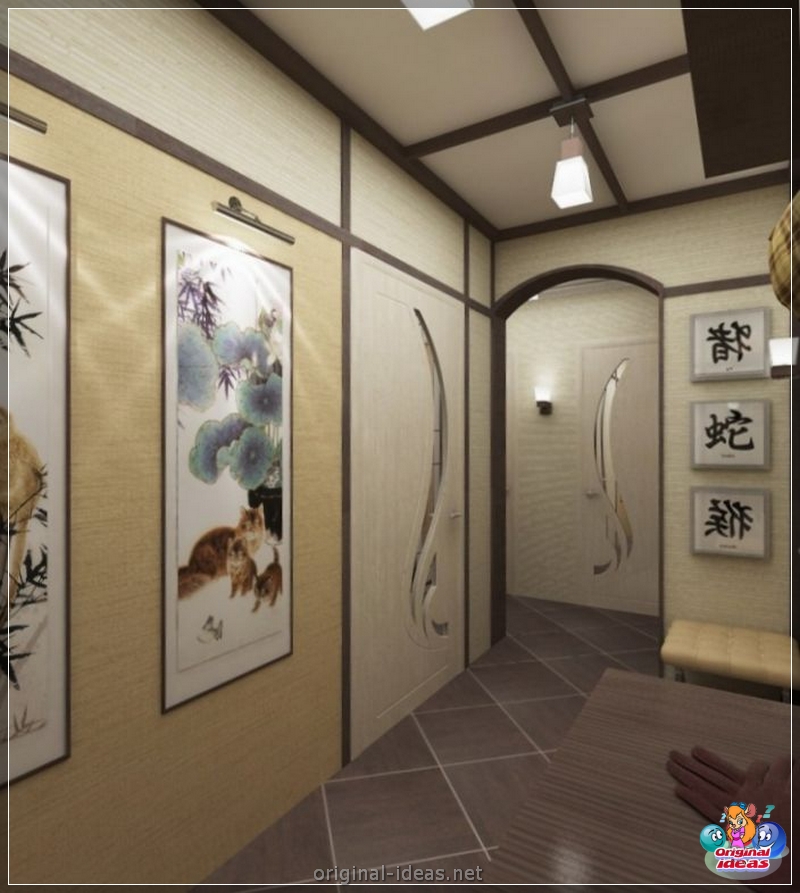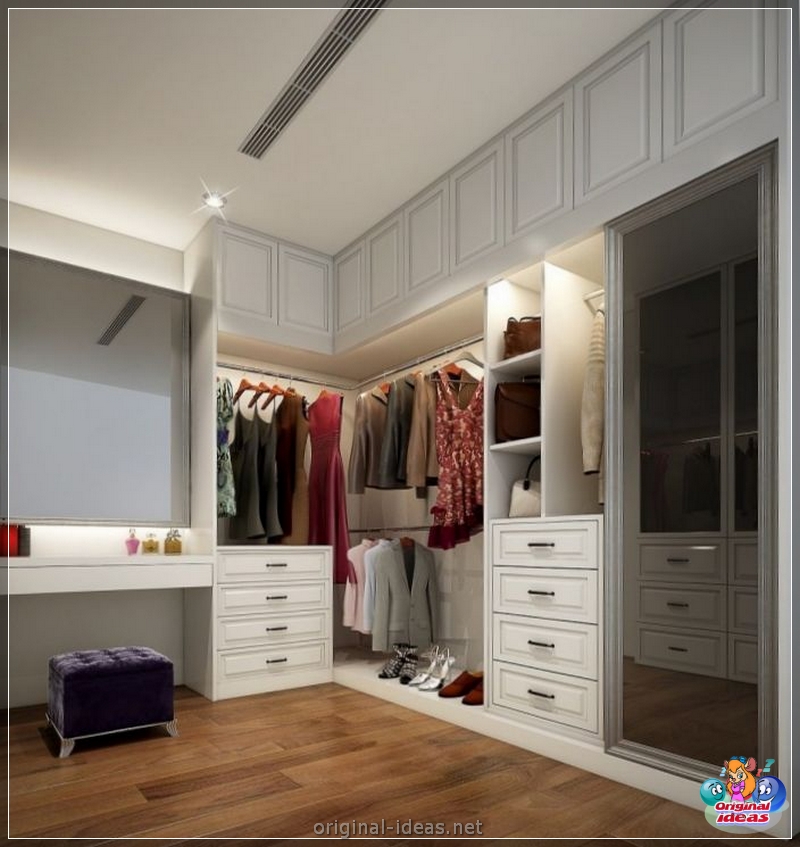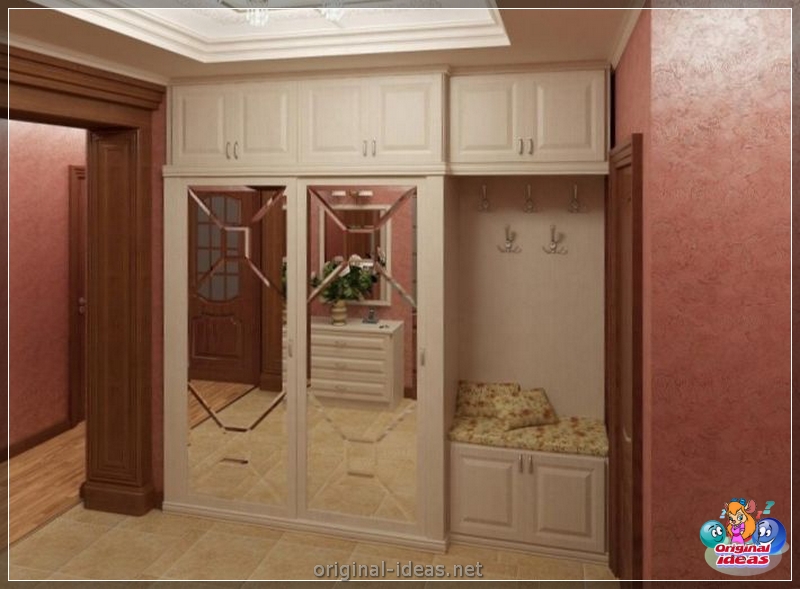
The hallway is the first room into which a person enters when entering the house or apartment. It sets a general mood and impression of interior design. At the same time, this is the last room that is visited before going outside, so it is important to maintain its functionality.
What can be done with the ceiling?However, when creating the design of the ceiling, you can give free rein to imagination and creative solutions. Modern interior designers offer solutions for different budgets and requests from customers.




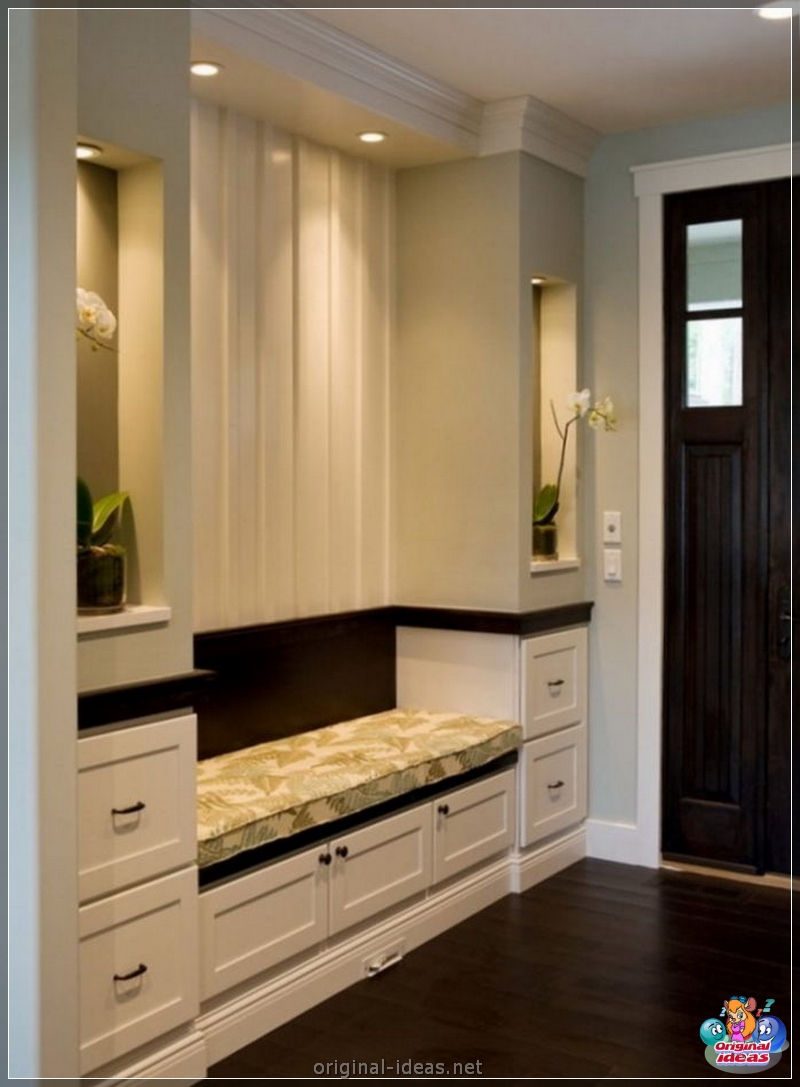





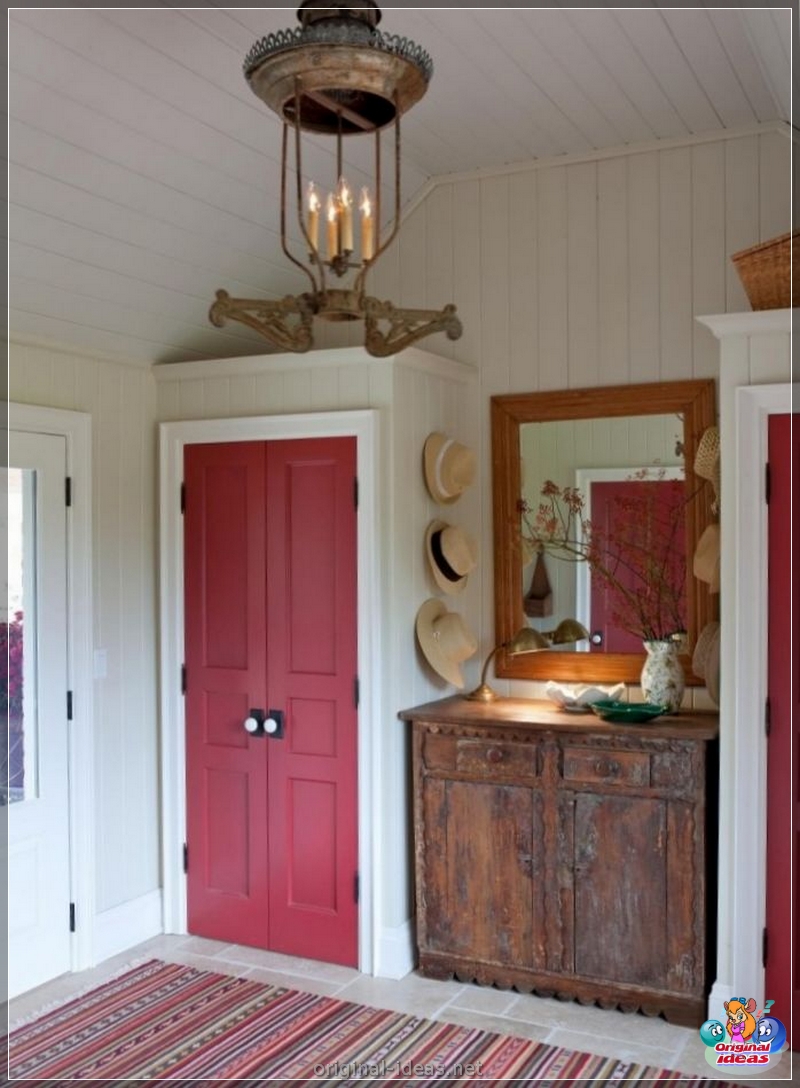
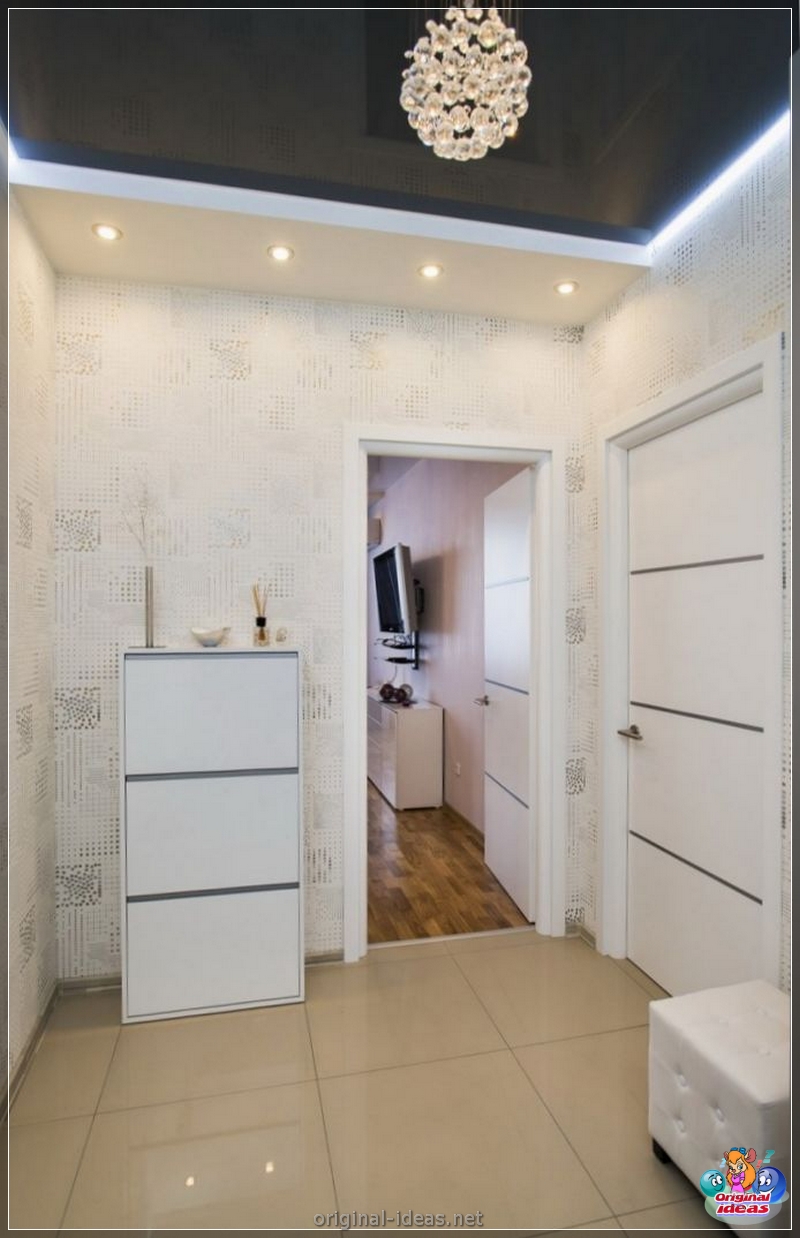

Centuries -old and traditional ceiling design in the hallway for many generations. The whitewash is quite inexpensive, it approaches almost any interior, since white looks neutral. In addition, he visually makes the space more in volume, which will play in the hands of a low and small hallway.

Disadvantages of whitewashing:
For a flat application of the solution, it is necessary to make the surface of the ceiling perfectly (or almost) even, since all cracks and roughness will become even more noticeable after applying it

It is recommended to whiten ceilings at least once a year, since over time the color becomes dull, dust also accumulates on the surface, which can give a gray or dirty white shade.

Nevertheless, many fans of minimalism make a choice in favor of this option. Photos of the whitewashed ceiling in the hallway are located on almost every page of the Scandinavian interiors.

Painting is a way similar to whitewashing, differs in that instead of a solution of white paint, any tones and colors are used. The construction market presents wide range of kings, it is this product that must subsequently mix with white paint in the necessary proportions.

The latter determines how rich the color of the ceiling in the hallway will be. Add more tint for saturated and bright shades or more white paint, then the tone will be delicate and pastel.

This method is slightly more complicated, but is also a budget option for decorating ceilings. Only plaster and initial skills of the artist will need, if there is no desire to hire specialists.

The method is very simple - with the help of instruments raw plaster, relief is given. These can be straight lines, geometric shapes, waves or even full -fledged drawings. Significant plus - there is no need to prepare the surface in advance. The method allows you to hide irregularities and small cracks on the ceiling.

Plasterboard ceilings in the hallway-practical solution to create multi-level and figure structures. The material is suitable for budget decisions and is unpretentious to process. This means that the surface does not need to be additionally processed.



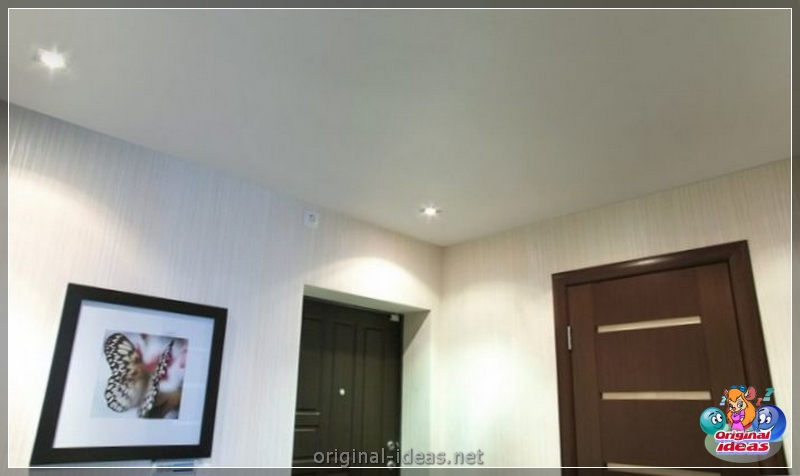


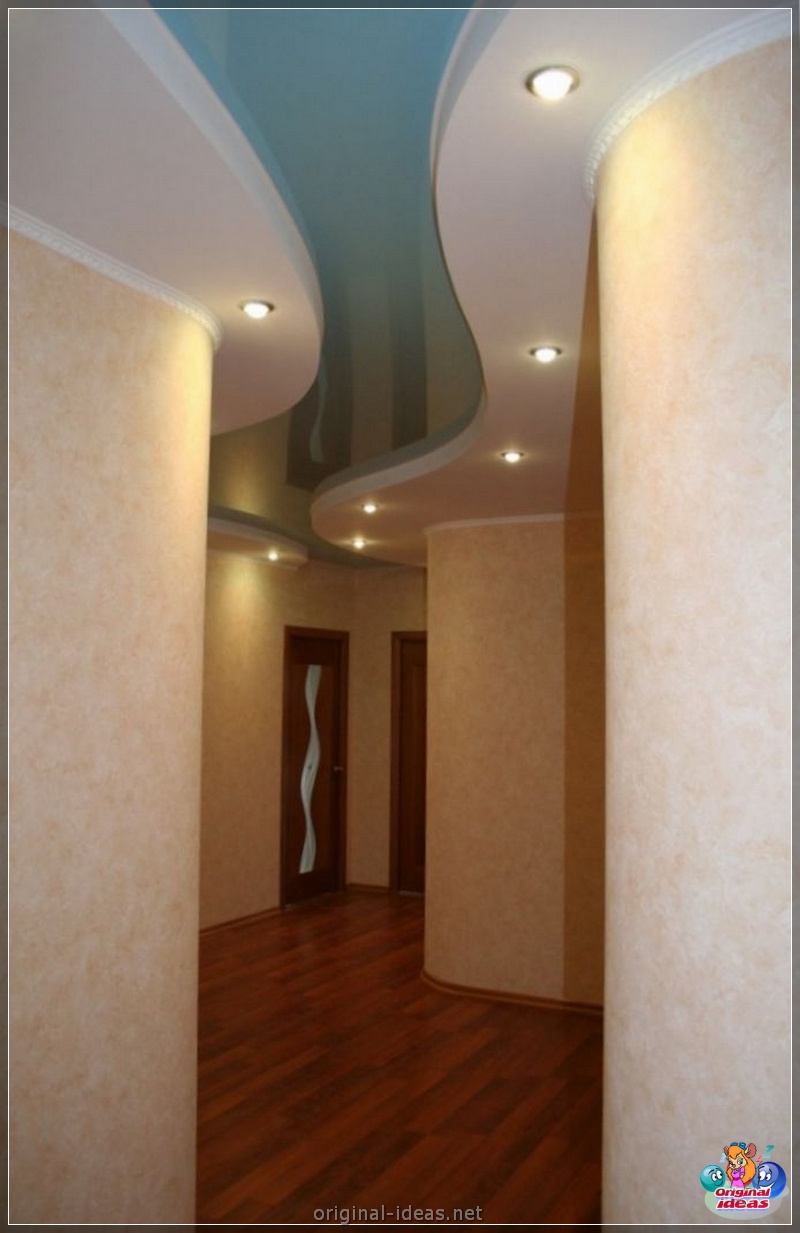


It is already smooth enough to use other finishing materials: paint, plaster, wallpaper. In addition to low cost, ease of installation and processing, drywall also has moisture resistance.

Stretch ceiling - a suspended ceiling system consisting of two main components - a solid structure of the profile and a thin PVC membrane, which is stretched and fixed on a metal or plastic basis.

Stretch ceilings allow you to mount all types of lamps and additional structures through the use of universal profile mounts.

The design of the stretch ceiling in the hallway allows you to visually expand the space, quite correctly select the shade and direction of the film lines.

However, during installation, you can not do without the help of specialists and equipment, therefore, the budget must be taken into account the cost of installation work, which will cost approximately as materials and above.

Plastic panels are also a simple installation option for decorating ceilings. Due to the location of clear lines, the panel ceiling in a narrow hallway will visually expand the space.

Manufacturers offer various color solutions, including imitating natural materials. Therefore, you can choose an economical solution that will look elegant and noble.

After the installation method and materials are determined, you need to think about what shade, with which ornament will be the finish.

It is also important to think over the location of the lamps. All these nuances, coupled, can turn the ceiling even in a small hallway into a practical tool for expanding space.

Remember that the overall tone of the interior of the room depends on the choice of the color of the ceiling in the hallway. In addition, competent use of shades increases the space or adds heights to the room. Use the advice of designers, even if they do not coincide with personal preferences.













The peculiarity of hallways and corridors is the lack of natural light sources in most cases. Light can also expand the space and vice versa narrow it. Use at least two lamps: general and point in the required place.

Individual preferences, budget and ways to hide the shortcomings and emphasize the advantages of the premises and respond to a request which ceiling is best done in the hallway. The main thing is that he gives aesthetic pleasure and practical benefits to the household.
















